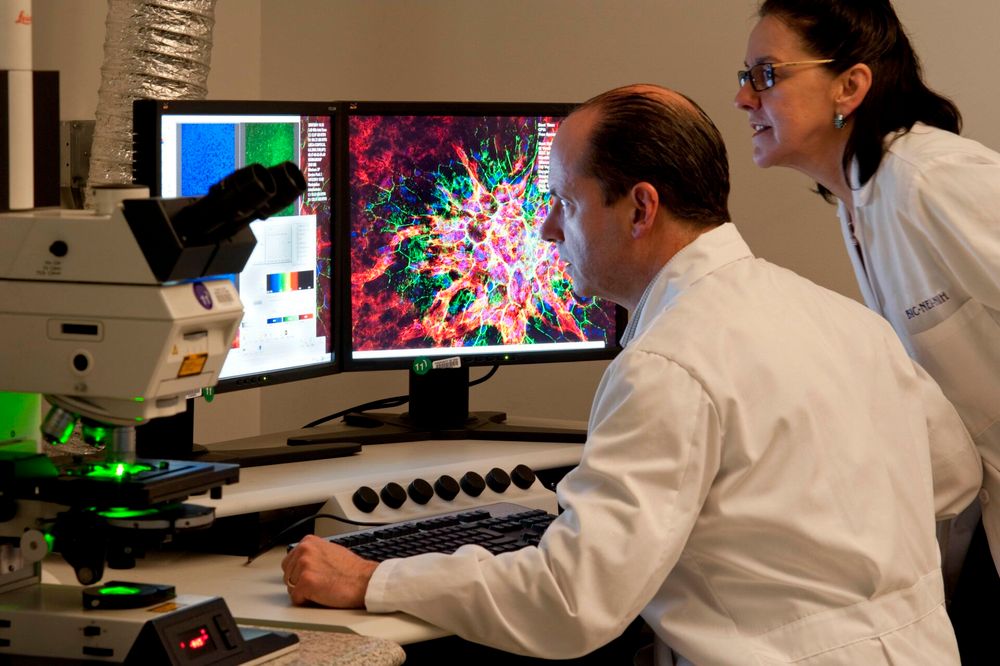Who is leading the war against science and what interest do they have
A vaccine developer and a climate science specialist have co-authored a book warning that science is under siege. Powerful elements are joining forces behind anti-science to destroy the palpable truth of research.
The world has traversed almost a quarter of the 21st century but faces increasingly challenging conditions. Summers in the northern hemisphere are now defined by flash floods, periods of drought, heatwaves, uncontrollable vegetation fires, and increasingly powerful named storms, just as scientists at Exxon predicted in the ’70s.
But that's not all. The U.S. Secretary of Health is advocating against the use of the most effective tool we have to combat infectious diseases that have devastated humanity for millennia. And people are absorbing false information spread by AI chatbots, which are just now emerging.
In this context, a climate scientist and a vaccine developer have teamed up to write "Science Under Siege". It's a book as grim as the title suggests, as reported in an article published by ars TECHNICA.
## Two Researchers Who Didn't Expect to Become Crusaders
Michael Mann is a climate science specialist at the University of Pennsylvania who developed a famous graph in 1998 showing that global surface temperatures were relatively constant until around 1900, when they began to rise steeply - and they haven't stopped since.
Peter Hotez is a microbiologist and pediatrician at Baylor College of Medicine, whose group developed an inexpensive and unpatented COVID-19 vaccine using public funds, not from any pharmaceutical company, and distributed it to nearly 100 million people in India and Indonesia.
Neither of them anticipated becoming crusaders in their respective fields - and probably neither anticipated that their fields would ever need crusaders. But each accepted the challenge and was rewarded for their efforts with harassment from the U.S. Congress and death threats. In this book, they hope to gather what they have learned as scientists and science communicators in our current world and turn these ideas into a rallying cry for defending science.
## Strategies of Attack Against Science
Mann and Hotez have more in common than being targeted online. Although trained in distinct disciplines, their fields are converging now. Climate change is altering habitats, migrations, and breeding patterns of wildlife carrying pathogens, such as bats, mosquitoes, and other insects. It is also causing human migration. Our increasing proximity to these species, both spatially and temporally, can increase opportunities to contract diseases transmitted by them.
However, the two scientists emphasize that we are facing a scourge that is even more dangerous than the climate crisis and a pandemic combined. Here's what they say:
* Currently, global leaders find it impossible to take the urgent measures needed to respond to the climate crisis and pandemic threats because they are thwarted by a common enemy - anti-science - which is politically and ideologically motivated opposition to any science that threatens powerful special interests and their political agendas.
* If we do not find a way to overcome anti-science, humanity will face the most serious threat yet - the collapse of civilization as we know it.
The authors point to the culprit for this critical situation we find ourselves in: "There is undoubtedly a coordinated and concerted attack on science by today's Republican Party."
* How Trump Destroys Scientific Progress Gained in a Generation
They have also listed the "five main forces of anti-science":
1. plutocrats and their political action committees;
2. petrostates, with their politicians and polluters;
3. false professionals - doctors and teachers;
4. propagandists, especially those with podcasts;
5. a certain part of the press.
**The tactic aims for factors 1 and 2 to engage elements from category 3 to generate deceptive and inflammatory talking points, which are then disseminated by willing members from categories 4 and 5** , the authors state.
## Anti-Science Has a Long History
Anti-scientific propaganda has been used by tyrants for over a century, notes the cited publication. Stalin imprisoned physicists and attacked geneticists while implementing Trofim Lysenko's absurd agricultural ideas, which deemed genes a "bourgeois invention." This led to the starvation of millions of people in the Soviet Union and China.
* NASA Announces Wave of Layoffs, Including Chief Researcher Katherine Calvin
**Why is science under attack? Because the scientific method is the best means we have to discover how our universe works and has been used to reveal otherwise unimaginable facets of reality.** Scientists are generally considered authorities possessing high levels of knowledge, integrity, and impartiality. **Discrediting science and scientists is, therefore, an essential first step for authoritarian regimes to then discredit any other forms of learning and truth and destabilize societies to keep them under control.**
In "Science Under Siege," the authors track the anti-scientific message about COVID, which followed the same trajectory as misinformation about climate change, except it was condensed into a few months instead of decades.
* Trump Effect: Over 75% of U.S. Scientists Consider Leaving the Country
The trajectory began by claiming the threat was not real. When that was no longer tenable, it quickly morphed into "OK, it's happening, and it might get pretty bad for a select few, but we definitely shouldn't take collective action to solve the problem as it would be detrimental to the economy."
Ultimately, it culminated in exploiting people's understandable fears in these frightening times, arguing that it's all the fault of scientists trying to take away people's freedom, whether it's bodily autonomy and the ability to spend time with loved ones (COVID) or plastic straws, hamburgers, and SUVs (climate change).
* FDA's Vaccines Chief Forced to Resign
**This misinformation has prevented us from addressing either catastrophes, misleading people about the severity or even existence of threats and/or insisting on their hopeless nature, depriving us of the will to do anything to counteract them.**
**Such strategies also sow discord among people, essentially ensuring they do not unite to take the essential collective action needed to address huge and complex issues.**
Mann and Hotez conclude that **the future of humanity and the health of our planet now depend on overcoming the dark forces of anti-science.**
## The Only Way to Fight Anti-Science
You may wonder why plutocrats, polluters, and Republican politicians are so determined to undermine science and scientists, to lie to the public, instill fear, and stoke hatred among their voters. For the same reason as always: to keep their money and power. The means to achieve this goal are countering regulations, the authors point out.
* Trump Destroys America's Marine Research While China Invests Heavily in the Field. How Many Researchers Were Laid Off
**The best - in fact, the only - thing we can do now to effect change is to vote and hope for favorable legislation.** "Only political change, including massive voter turnout to support politicians who favor people over plutocrats, can ultimately solve this broader systemic problem," Mann and Hotez state.
However, since the U.S. President and Vice President don't even believe in "systemic issues" or recognize them, the future doesn't look too bright.
T.D.





















